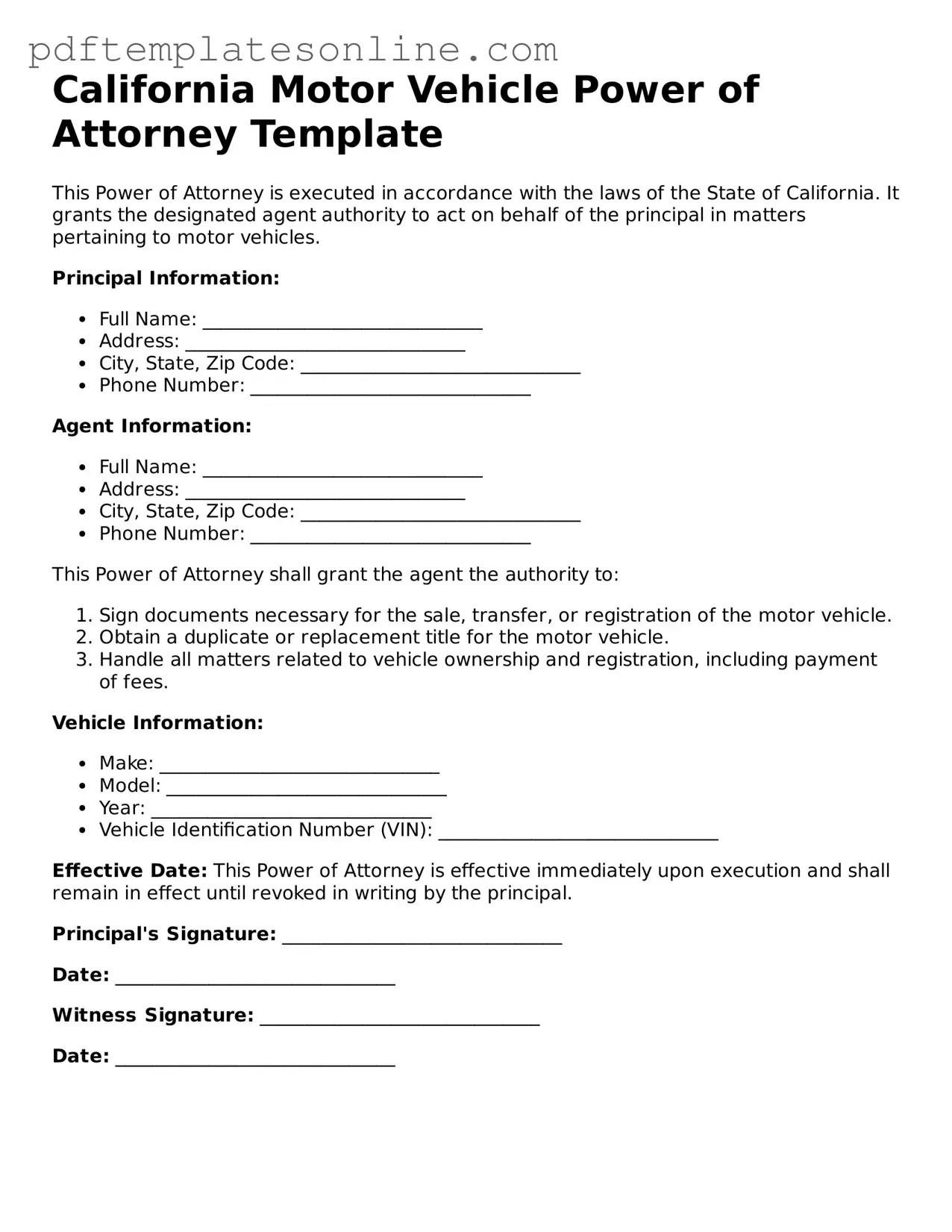Filling out the California Motor Vehicle Power of Attorney form can be straightforward, but several common mistakes can lead to complications. One frequent error is failing to provide complete information about the principal and the agent. It is essential to include full names, addresses, and contact information to ensure that the document is valid and enforceable.
Another mistake involves not signing the form correctly. The principal must sign the document, and if the signature does not match the name as it appears on the form, it may raise questions about authenticity. In some cases, individuals may forget to date the form, which is crucial for establishing the timeline of the power of attorney.
People often overlook the specific powers granted to the agent. The form allows for customization, and failing to clearly specify the powers can lead to confusion. It is advisable to check the boxes that correspond to the desired powers, ensuring that the agent understands their authority.
Additionally, many individuals neglect to have the form notarized when required. While notarization may not be necessary for every situation, it can add an extra layer of protection and legitimacy to the document. Notarization helps verify the identity of the principal and confirms that they are signing voluntarily.
Another common issue is not providing a backup agent. In the event that the primary agent is unable to perform their duties, having a secondary agent designated can prevent delays or complications in managing the vehicle. This step is often overlooked but can be crucial for seamless transitions.
People sometimes fail to keep a copy of the completed form. Retaining a copy is important for both the principal and the agent. It ensures that all parties involved have access to the same information and can refer back to the document when necessary.
Moreover, individuals might fill out the form without understanding the implications of granting power of attorney. It is vital to fully comprehend what authority is being given and the potential consequences. This understanding can help prevent disputes or misunderstandings in the future.
Lastly, some may rush through the process, leading to careless mistakes. Taking the time to review the form carefully can prevent errors that might otherwise complicate the authority granted. A thorough review ensures that all information is accurate and complete, which is essential for the document's effectiveness.
